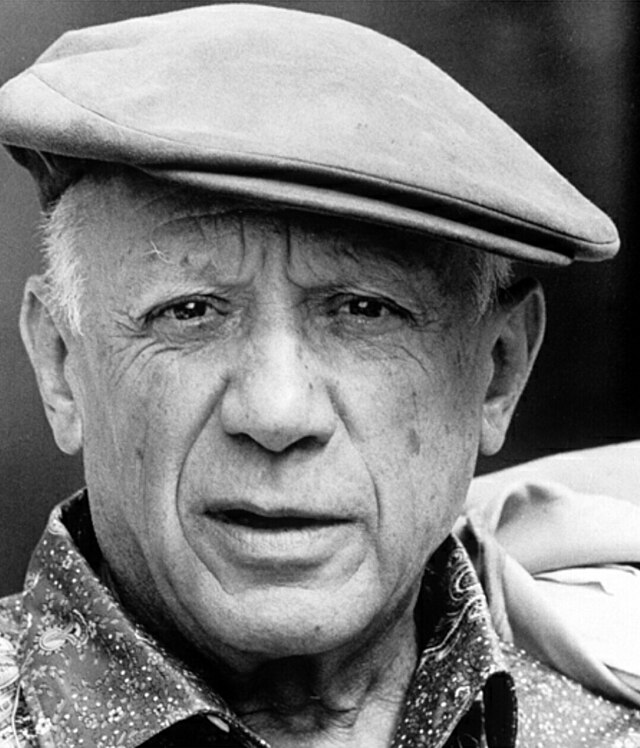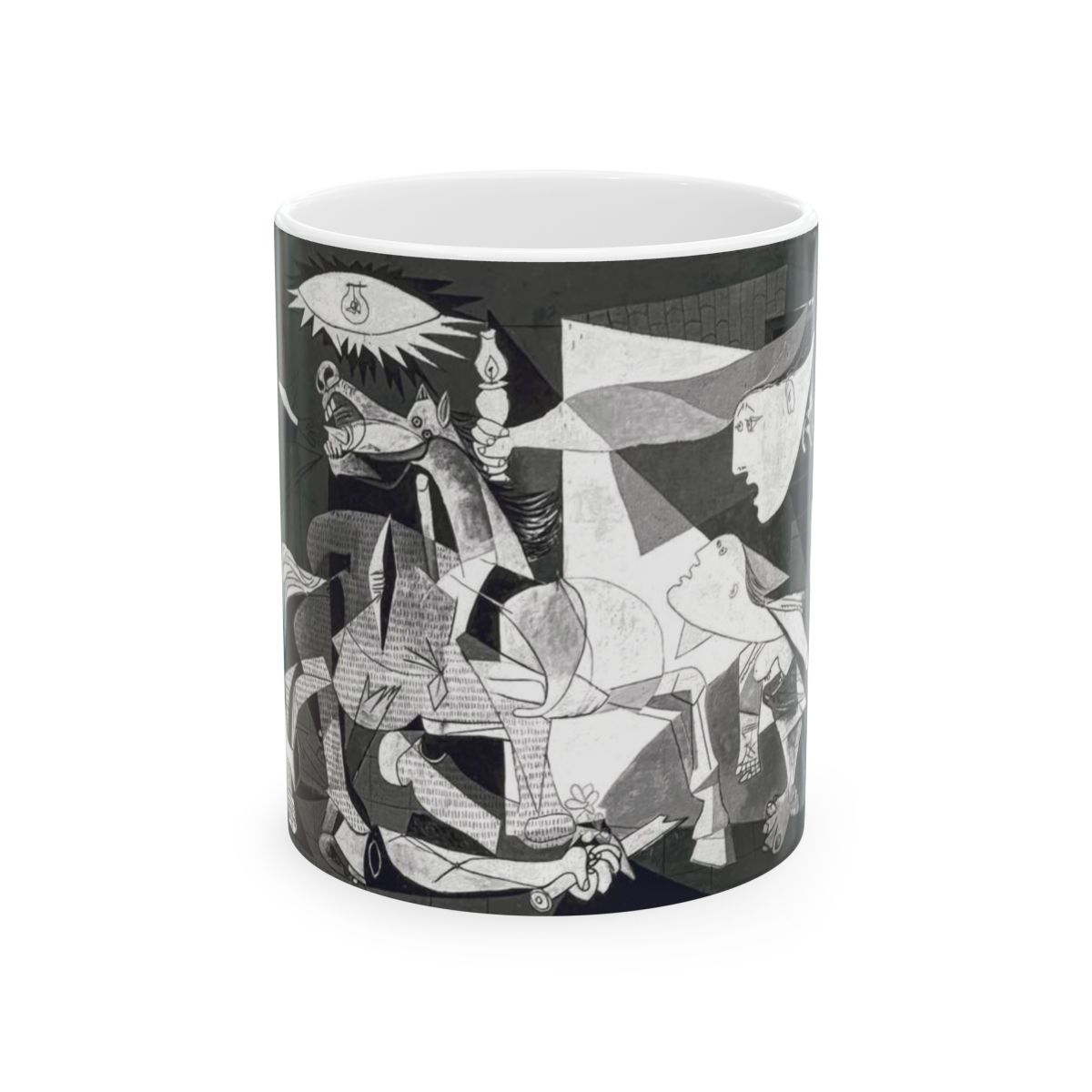Pablo Picasso Biography: Definitive Guide to the Life & Art of Artist Pablo Picasso

Introduction: The Visionary Journey of Artist Pablo Picasso
The 20th century ushered in seismic changes in artistic expression, and at the forefront stood artist Pablo Picasso. Born on October 25, 1881, in Málaga, Spain, Picasso pioneered techniques that dismantled the boundaries of traditional art. This comprehensive Pablo Picasso biography explores his early life, groundbreaking contributions to modern art, and how his relentless innovation still resonates today.
In this expanded Pablo Picasso bio, you’ll discover the story behind iconic works like Les Demoiselles d'Avignon and Guernica, as well as the personal and cultural forces that shaped his creative journey. Join us as we delve into his formative years, his meteoric rise in Paris, and his enduring influence on generations of artists worldwide.
From the haunting melancholy of the Blue Period to the radical experiments that gave birth to Cubism, artist Picasso continuously challenged societal norms. Whether you’re an art enthusiast or a curious newcomer, prepare to witness how he carved out a legacy that forever altered the trajectory of modern art.
A Comprehensive Pablo Picasso Biography: Key Dates and Milestones
- 1881: Born on October 25 in Málaga, Spain, to José Ruiz Blasco (an art teacher) and María Picasso y López.
- 1895: Moves with his family to Barcelona, where he begins formal art education at the La Llotja School of Fine Arts.
- 1901: Starts his Blue Period (1901–1904), marked by somber tones and themes of human suffering.
- 1904: Transitions to the Rose Period (1904–1906), adopting brighter hues and more joyful subjects.
- 1907: Creates Les Demoiselles d'Avignon, laying the foundation for Cubism.
- 1912: Collaborates with Georges Braque to formally establish Cubism, radically altering modern artistic expression.
- 1937: Paints Guernica in response to the bombing of the Basque town during the Spanish Civil War.
- 1973: Passes away on April 8 in Mougins, France, leaving behind a transformative legacy in modern art.
Formative Years: Building the Foundation of Artist Picasso’s Legacy
Picasso’s upbringing in Spain played a pivotal role in shaping his artistic vision. Under the guidance of his father, José Ruiz Blasco, a respected art teacher, the young Picasso displayed prodigious talent early on. By his teenage years, he had already mastered classical drawing techniques, earning praise for his remarkable precision.
In Barcelona’s lively cultural scene, Picasso encountered modernist ideas that spurred his fascination with unconventional styles. This shift from rigid academic training to a more experimental mindset foreshadowed the innovations that would later define his career. Exposure to Iberian sculpture, with its stylized forms, subtly informed his evolving aesthetic.
These formative experiences laid the groundwork for his ceaseless experimentation and boundary-pushing, hallmarks that would distinguish artist Picasso throughout his prolific career.
Early Style and Influences on the Young Artist Pablo Picasso
Even before Cubism, artist Pablo Picasso explored various styles, notably during his Blue Period (1901–1904). Works like The Old Guitarist exude an air of melancholy, reflecting themes of poverty and emotional isolation. Picasso’s use of cool blues starkly contrasted the more decorative art popular at the time.
By contrast, his Rose Period (1904–1906) introduced brighter pinks, reds, and warm earth tones to depict circus performers and harlequins. This shift showcased his ability to transform personal feelings into bold visual statements. Around this time, he also drew inspiration from African tribal masks, an influence visible in the growing abstraction of his forms.
These stylistic leaps set Picasso on a path that would culminate in his most revolutionary innovations, ultimately cementing his status as a visionary force in modern art.
Paris Breakthrough: How Artist Pablo Picasso Revolutionized Modern Art
Picasso’s move to Paris in the early 1900s immersed him in Europe’s avant-garde epicenter. Within this vibrant milieu of cafes and art salons, he befriended influential figures like Gertrude Stein and Henri Matisse, fostering an environment conducive to creative experimentation.
His partnership with Georges Braque proved pivotal. Their shared fascination with deconstructing form and perspective led to the birth of Cubism, an entirely novel approach that presented subjects through multiple viewpoints. By reducing objects to geometric shapes, artist Pablo Picasso challenged every convention of representational art.
Support from art patrons and fellow creatives propelled his ideas to the forefront of modern art discourse. His insatiable curiosity and groundbreaking vision quickly cemented him as a leading figure in 20th-century art.
Les Demoiselles d'Avignon (1907): Picasso’s Radical Leap Forward
In 1907, Picasso unveiled Les Demoiselles d'Avignon, a landmark not only in his career but also in the wider realm of modern art. Abandoning classical beauty standards, he presented the female figure in angular, disjointed shapes, influenced by African and Iberian art forms. This bold fragmentation startled the art establishment.
Les Demoiselles d'Avignon signaled the birth of Cubism and underscored Picasso’s willingness to take risks. By rejecting established norms, artist Picasso paved the way for future movements that would similarly question and redefine artistic traditions.
More than a century later, the painting remains a powerful statement of artistic freedom, exemplifying Picasso’s enduring mission to disrupt and reinvent.
Guernica (1937): A Monument to Picasso’s Social Consciousness
Painted amidst the turmoil of the Spanish Civil War, Guernica stands as Picasso’s most profound political statement. The large-scale, grayscale mural captures the anguish of war through distorted figures and emotive symbolism, condemning the 1937 bombing of the Basque town of Guernica.
Beyond commenting on Spain’s political crisis, the piece resonates as a universal outcry against aggression. It has toured globally, solidifying Picasso’s reputation as not only an innovator but also a socially engaged artist.
For many, Guernica epitomizes the transformative power of art, demonstrating how artist Pablo Picasso used his talent to highlight both the tragedies and resilience inherent in humanity.
Later Life and Continuous Innovation: Pablo Picasso’s Ever-Evolving Art
Picasso’s creative energy persisted throughout his life. In his later years, he delved into sculpture, ceramics, stage design, and printmaking, applying the same investigative spirit that fueled Cubism. This commitment to exploring new media reflected his conviction that art should not be confined by tradition.
Thematically, he revisited motifs from earlier periods—bullfights, harlequins, and classical nudes—but always with a fresh twist. His ability to merge past and future until his passing in 1973 demonstrated an unyielding pursuit of innovation.
This restless creativity defined artist Picasso as much as his iconic paintings, proving that true artistic mastery is a lifelong endeavor.
Pioneering Techniques: The Lasting Influence of Artist Pablo Picasso
Central to Picasso’s enduring impact is his groundbreaking approach to form, composition, and perspective. By fragmenting subjects into geometric planes and layering multiple angles within a single image, he fundamentally altered how art could depict reality.
The introduction of collage—a technique blending paint, newspapers, and everyday objects—further expanded the realm of modern art. This innovation encouraged artists to see art-making as an ongoing dialogue, where any material could be repurposed to create new meaning.
Today, many branches of contemporary art—abstract, mixed media, conceptual—trace their lineage to Picasso’s experimental ethos. He remains a guiding light for those who dare to push creative boundaries.
In-Depth Analysis: How Picasso’s Vision Shaped Modern Art
Scholars often laud Picasso for marrying meticulous classical training with unbridled innovation. His technical grounding empowered him to reinvent the rules of art from within, exploring multiple perspectives and symbolic imagery in a single piece. Such departures influenced movements ranging from Abstract Expressionism to Surrealism.
Picasso’s work is more than a break from tradition; it is a reconfiguration of it. By inviting viewers to interpret fragmented forms, he fostered an intellectually and emotionally charged viewing experience. Art thus became a collaborative effort, reliant on both the artist’s vision and the observer’s engagement.
His global travels and diverse cultural influences broadened his style further. The mask-like visages in some paintings echo African art, while the inclusion of mythological or Spanish elements ties back to his Mediterranean roots. This confluence of cultures underscores artist Pablo Picasso’s unique gift for universalizing personal experiences.
In art institutions worldwide, Picasso’s name endures as a benchmark for innovation. His methods—from the emotive Blue Period to the analytical Cubist approach—are dissected in classrooms, ensuring each new generation of artists contends with his towering legacy.
Global Cultural Impact: The Enduring Influence of Artist Pablo Picasso
Even decades after his passing, Picasso remains a global cultural phenomenon. His works headline major museums, and large-scale retrospectives attract millions of visitors, eager to experience the raw power and humanity in his art.
Educational programs frequently turn to artist Picasso as a lens for understanding the evolution of modern art. By examining his break with tradition, students gain a window into broader themes of creativity, rebellion, and cultural interplay.
Meanwhile, documentaries, scholarly texts, and online archives continue to expand the public’s understanding of Picasso’s multifaceted legacy. Social media and virtual exhibits extend this reach to digital audiences, ensuring that Picasso’s artistic language remains as influential as ever.
This enduring admiration speaks to Picasso’s capacity to fuse technical mastery with fearless experimentation—an approach that resonates with art lovers and creators across generations.
Conclusion: Celebrating the Genius of Artist Pablo Picasso
The extraordinary journey of artist Pablo Picasso personifies art as a transformative force. Spanning the introspective Blue Period to the radical genesis of Cubism, his oeuvre continually defied the status quo. Masterpieces like Les Demoiselles d'Avignon and Guernica didn't just redefine aesthetics—they shaped modern culture at large.
This Pablo Picasso biography offers a window into the life of a visionary whose reach transcends time. Whether you’re encountering Picasso for the first time or revisiting his storied career, his evolution from precocious child artist to global master stands as a testament to infinite creativity.
Ultimately, Picasso’s life story is one of perpetual reinvention—an enduring lesson that art’s horizons are limitless, and that genuine innovation often begins by questioning every rule.
For more inspiration and insights into his creative genius, check out our collection of Pablo Picasso quotes and sayings.
Further Explorations and Resources on Pablo Picasso
Interested in delving deeper into artist Pablo Picasso? Check out these authoritative resources for additional insights into his life and art:
- Museo Picasso, Barcelona – Explore an extensive collection of Picasso’s works and learn about his creative evolution.
- Museo Picasso, Málaga – Discover Picasso’s early influences and the deep cultural ties from his native region.
- Encyclopedia Britannica – Pablo Picasso – A scholarly overview detailing his artistic journey, major periods, and lasting influence.
- The Metropolitan Museum of Art – Browse Picasso’s masterpieces alongside other modern art legends.
- Pablo Picasso Quotes and Sayings – A curated collection of the artist’s most memorable insights and reflections.
Shop the Picasso Collection
Elevate your space with a premium mug featuring the iconic Guernica by artist Pablo Picasso.
